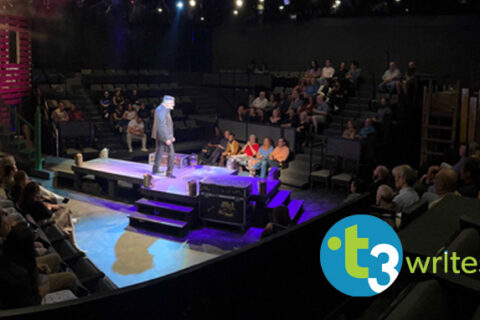Some Notes on an Attempt at Translating F. García Lorca
Some Notes on an Attempt at Translating F. García Lorca by Dante Flores, the translator/adaptor of The Butterfly’s Evil Spell
I
Richard Zenith, reflecting on his experience translating the Portuguese poet Fernando Pessoa, wrote that “the translator of a poem…will never be able to say ‘This is it. I’ve arrived at a definite version in my own language.’ We arrive at a version that seems to us possible, acceptable, publishable.” I like Zenith’s idea of the “acceptable version.” It frames the work of translation as a dialogue: the translator puts forward an idea – what they believe the original author is getting at, to the best of their knowledge – and it’s up to the reader/listener to accept or reject it. It’s a rigorous, scientific attitude; yet it centers the unique, communal functions of translation and storytelling.
II
El maleficio de la mariposa is written in verse. This means two things for a translation. The first is that verse requires a certain economy. As in Shakespeare (to whom Lorca is indebted), Lorca embeds the story in the pace of the text. A quick back-and-forth between Doña and the Witch builds into the first, overwritten poem we hear from the Roach Boy; the Roach Boy’s poems, the Witch’s visions, and the Scorpion’s bawdy songs build into the Butterfly’s otherworldly, floating soliloquy; which in turn builds into the Roach Boy’s wild, passionate confession of love to the Butterfly. Lorca’s images are most impactful if the rhythm is allowed to do the work of building tension. But – and this is the second thing – each of these characters getting their own moment on stage implies a new challenge. In any language, the text needs to move, but it needs to sing too, and in choir. Each voice needs to be given room to breathe: enough for the audience to tune its ear, but not so much that it encroaches on rhythm. This balancing act is why Zenith’s “acceptable version” idea is useful: it makes these abstract ideas testable. Is the story (which is distinct from the plot) clear? Are the characters clear? Is there room for a reader (or a cast and a creative team) to interpret it? Like the thing being translated, the translation is itself raw material, to be shaped or refined as it is found useful or useless.
III
Possibility and acceptability are good ways to think about the production’s second half – the adapted part. In picking up where Lorca’s text leaves off, I had to ask the same question: what would make this acceptable, or even possible? I stuck as closely to Lorca as I could, finding payoffs for everything he introduces in the first two acts. Many of the plot points are assembled from eyewitness accounts of the first production; assorted poems; and the final address to the audience is an abbreviated, repurposed version of Lorca’s prologue to the play. Those were the outlines, so the operative question was How To Fill Them In? I think the answer lies in another question, one raised in Lorca’s text: what is the point of poetry? If it doesn’t feed you or clothe you or clean and heat your home, what’s the point of poetry?
IV
The reviews for El maleficio were brutal. Critics agreed that the young García Lorca was a technically skilled poet; they also agreed that the play was hardly a play, with lines that were inappropriate for its insect protagonists. We can say with hindsight that audiences weren’t ready for fantastical, anti-realist writing. You went to the theatre to see a middle-class comedy, not a cockroach who asks if God is even real. The audience’s response to the play was so negative, so gangrenous, that Lorca would insist his first play was Mariana Pineda, not El maleficio. But historically, the reaction is unsurprising. You can say uncontroversially that Lorca would go on to be a Surrealist, and it was the Surrealists’ belief that the old, bourgeois, Victorian ways of thinking and making art had nothing to offer anymore. “This dish would make a good impression on any table,” André Breton and Philippe Soupault wrote in 1919, “it’s too bad we’re no longer hungry.” At the turn of the 20th century (as the economically advanced countries were reeling from an imperialist world war, and as Spain, the former imperial power, was politically disintegrating) a new morality was necessary, audiences be damned. And the task of poetry – indeed, the point – was to forge it.
V
Does the Roach Boy feel that way? I’m not sure. He’s a young poet, in the mold of Rimbaud: more than a Doer, he’s a Seer. The Roach Boy is awaiting some great mystery to decide the course of his life, according to Lorca’s stage directions (and he’s unlucky enough to get what he wants). I think, if anything, the Roach Boy sees poetry as the way to bring ourselves closer to Beauty, to Perfection.
VI
Perhaps poetry – and art generally – is itself a form of translation. New sensations, new events, new mysteries, come hurtling toward us; it’s through poetry that we translate them into something comprehensible, something that we hand to one another to accept or reject.


